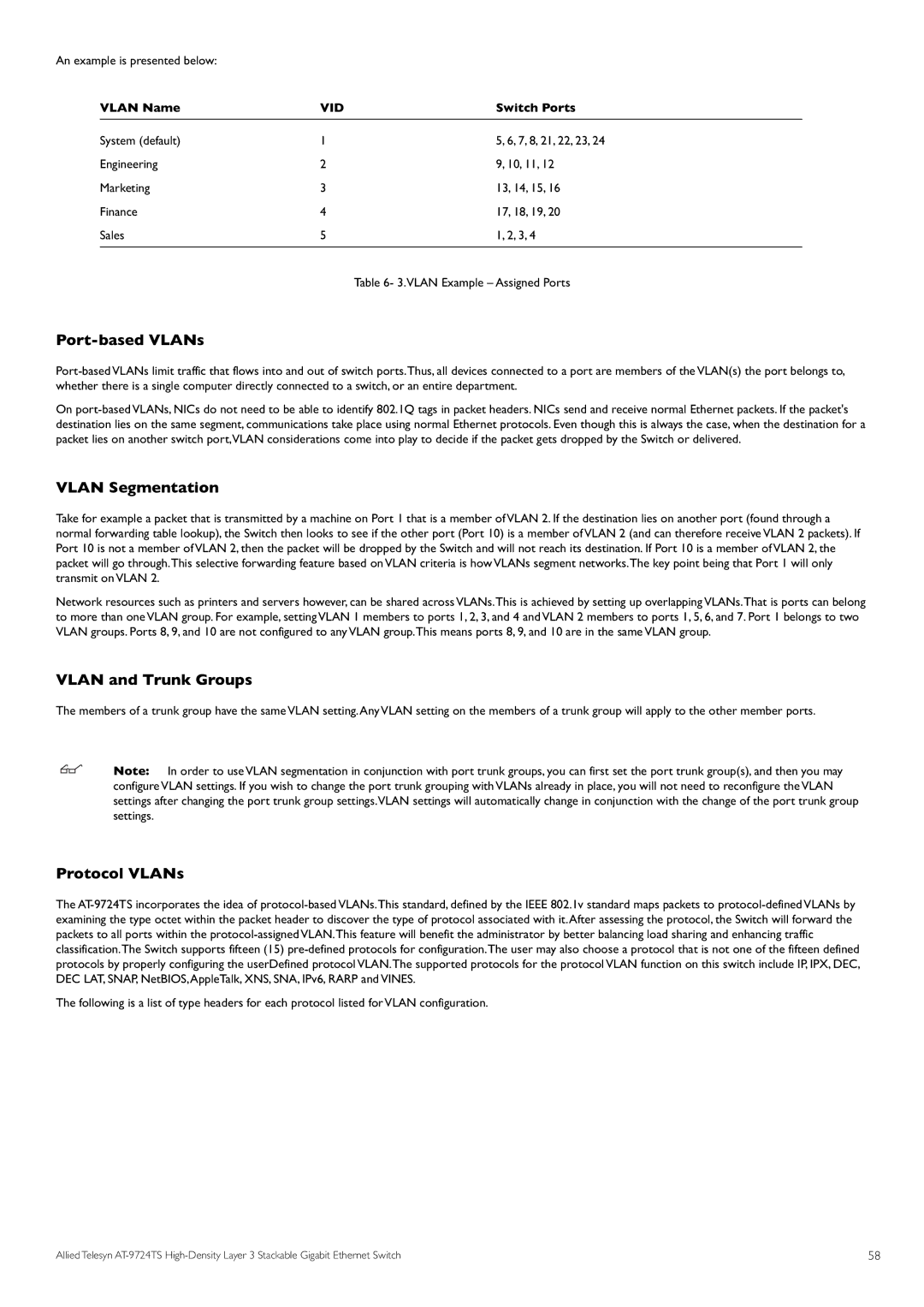An example is presented below: |
|
| |
| VLAN Name | VID | Switch Ports |
| System (default) | 1 | 5, 6, 7, 8, 21, 22, 23, 24 |
| Engineering | 2 | 9, 10, 11, 12 |
| Marketing | 3 | 13, 14, 15, 16 |
| Finance | 4 | 17, 18, 19, 20 |
| Sales | 5 | 1, 2, 3, 4 |
Table 6- 3.VLAN Example – Assigned Ports
Port-based VLANs
On
VLAN Segmentation
Take for example a packet that is transmitted by a machine on Port 1 that is a member of VLAN 2. If the destination lies on another port (found through a normal forwarding table lookup), the Switch then looks to see if the other port (Port 10) is a member of VLAN 2 (and can therefore receive VLAN 2 packets). If Port 10 is not a member of VLAN 2, then the packet will be dropped by the Switch and will not reach its destination. If Port 10 is a member of VLAN 2, the packet will go through.This selective forwarding feature based on VLAN criteria is how VLANs segment networks.The key point being that Port 1 will only transmit on VLAN 2.
Network resources such as printers and servers however, can be shared across VLANs.This is achieved by setting up overlapping VLANs.That is ports can belong to more than one VLAN group. For example, setting VLAN 1 members to ports 1, 2, 3, and 4 and VLAN 2 members to ports 1, 5, 6, and 7. Port 1 belongs to two VLAN groups. Ports 8, 9, and 10 are not configured to any VLAN group.This means ports 8, 9, and 10 are in the same VLAN group.
VLAN and Trunk Groups
The members of a trunk group have the same VLAN setting.Any VLAN setting on the members of a trunk group will apply to the other member ports.
Note: In order to use VLAN segmentation in conjunction with port trunk groups, you can first set the port trunk group(s), and then you may configure VLAN settings. If you wish to change the port trunk grouping with VLANs already in place, you will not need to reconfigure the VLAN settings after changing the port trunk group settings.VLAN settings will automatically change in conjunction with the change of the port trunk group settings.
Protocol VLANs
The
The following is a list of type headers for each protocol listed for VLAN configuration.
Allied Telesyn | 58 |
